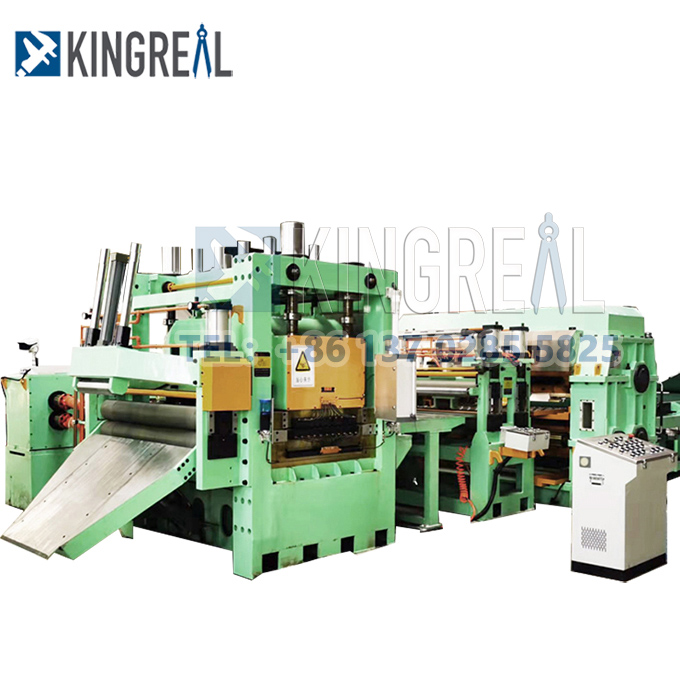Precision-in-Motion-Navigating-Speed-and-Capacity-Considerations-in-Stainless-Steel-CTL-with-Precision-Levelers
2023-12-08
Introduction:
In the dynamic landscape of stainless steel manufacturing, the role of a Precision Leveler in a Cut to Length (CTL) line is pivotal. Achieving the delicate balance between speed, capacity, and precision is crucial for meeting the demands of diverse industries. In this blog, we'll explore the typical speed and capacity considerations when utilizing a Precision Leveler for stainless steel CTL applications, highlighting the factors that ensure optimal performance in this specialized realm.
The Need for Speed: Balancing Velocity and Precision
1. Material Thickness and Grade:
The speed at which a Precision Leveler operates is closely tied to the thickness and grade of the stainless steel being processed. Thicker sheets or higher-grade alloys may require a more controlled and deliberate leveling process, impacting the overall processing speed. Conversely, thinner sheets or lower-grade alloys may allow for increased throughput.
2. Variable Speed Capabilities:
One of the key features of Precision Levelers designed for stainless steel CTL applications is their variable speed capabilities. This flexibility allows operators to adjust the processing speed based on the specific characteristics of the stainless steel sheets being leveled. Variable speed control is crucial for tailoring the leveling process to different materials and achieving the desired flatness.
3. Precision Leveling vs. Production Throughput:
Finding the optimal balance between precision leveling and production throughput is a delicate dance. While precision is paramount for achieving the desired flatness and quality, production efficiency is equally important. The speed at which the Precision Leveler operates should strike a harmonious chord between precision requirements and the demand for efficient material processing.
4. Integration with CTL Line Speeds:
The overall speed of the CTL line, including the Precision Leveler, should align with the intended production goals. The integration of the Precision Leveler into the CTL line requires synchronization with other components, ensuring a seamless flow that maximizes efficiency without compromising the quality of the leveled stainless steel sheets.
Capacity Matters: Navigating Throughput Challenges
1. Coil Width and Length:
The capacity of a Precision Leveler is influenced by the dimensions of the stainless steel coils it processes. The width and length of the coils determine the maximum capacity the leveler can handle. Precision Levelers are designed to accommodate varying coil sizes, and considerations of capacity take into account the maximum dimensions the equipment can effectively process.
2. Thickness Range:
Stainless steel sheets come in a variety of thicknesses, and the capacity of a Precision Leveler is defined by the range of thicknesses it can handle. The equipment must be capable of effectively leveling thin gauges as well as thicker sheets. The capacity specifications provide guidelines for the range of thicknesses that the Precision Leveler can process efficiently.
3. Roller Configurations and Adjustability:
The design and adjustability of the roller configurations in a Precision Leveler play a crucial role in determining its capacity. The leveler should be equipped with rollers that can handle the specified range of stainless steel thicknesses and grades. The adjustability of the roller settings allows for versatility in accommodating different materials within the designated capacity.
4. Automated Adjustments for Varied Capacities:
Advanced Precision Levelers often feature automated adjustments that can be programmed based on the specific capacities required. This automation facilitates seamless transitions between different stainless steel grades and thicknesses without the need for extensive manual reconfigurations, enhancing overall capacity and efficiency.
Conclusion:
In the realm of stainless steel CTL applications, achieving the right balance between speed and capacity is essential for optimizing efficiency without compromising precision. The typical considerations for speed and capacity in Precision Levelers involve a nuanced understanding of the material characteristics, integration with CTL line speeds, and the adaptability of the equipment to handle diverse stainless steel dimensions. As the demand for precision and efficiency continues to drive stainless steel manufacturing, the role of Precision Levelers remains integral in shaping sheets that meet the highest standards of quality and performance.



